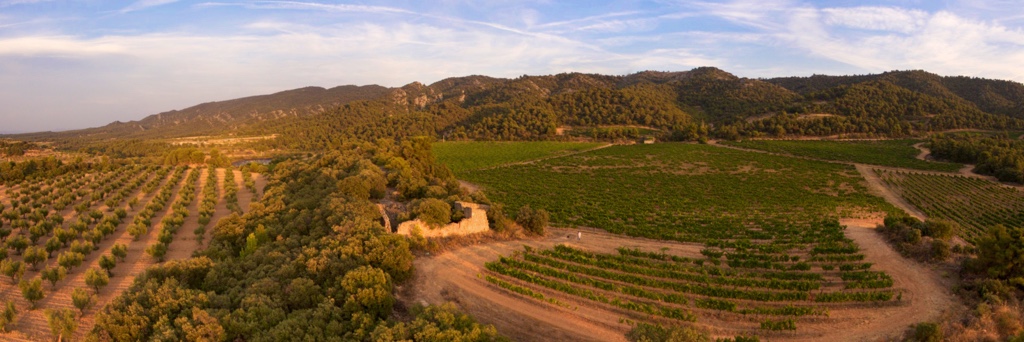The ridge of the Llena mountain range has the highest elevation to the east: Punta de Curull, also known as Tossa de Quico, is the highest point of the Llena range and the regional ceiling of Les Garrigues, at 1,021.9 m. Other peaks of this mountain range include Penya Alta (1,015 m), Punta del General (924 m) and Punta de Viern (904 m).
Distributed throughout the ubac there are several shallow ravines, the only one that flows with water all year round is that of Sant Miquel, which is the source of the river Set.
The hermitage of Sant Miquel de la Tosca is located to the south-west of Vilosell, at the end of La Pobla de Cérvoles, nestled at the foot of the Llena mountain range, in a in a beautiful lush and shady place, at just over 700 meters in altitude. The hermitage and its grounds are located at the headwaters of the river Set, which is born of 7 sources that spring from the mountain.
FLORA AND VEGETATION
Although this mountain range comes into contact with the mountains of Prades through the Natural Park Bosc de Poblet , in terms of vegetation and geology, it shares more in common with Montsant, which is separated by a river of the same name. To begin with, the north-south arrangement: the northern slopes of both ranges have a lighter and richer vegetation, formed of holm oaks, scot's pines, white pines and the odd Valencian oak; it is in a humid ubac with rich, deep soils. On the other hand, the southern slopes have a more impoverished vegetation, pine forests of thin white pine and calcic weeds, conditioned by their sunny situation and the influence of other types of winds. In addition, these slopes of the south are formed by important scarps: Punta del Curull, Coll de l'Abellar, Penya Alta and all the scarps of the Llena would be equivalent to the Major del Montsant mountain range. They have the same cliffs made of limestone conglomerate rock, alternated with layers of marl, sandstone and shale.
WILDLIFE
The wildlife inhabiting the Llena mountain range is typical of Mediterranean forest environments, although due to its physiographic characteristics it has experienced an overlapping of Pyrenean Central European wildlife with that of North African origin.
The communities of predators are well established and quite abundant: beech martens, genets, badgers, foxes, etc. Among the typical mammals of the forests, the small shrew is noteworthy, as an isolated element of the European populations and as an example of a broken distribution area due to the retreat of the glaciations.
The cave dwelling fauna of the karst cavities, which are rich in endemic species, are very interesting in terms of their wildlife and biogeography with very ancient species that have taken refuge in the hypogeal domain and, in many cases, do not have close epigeal relatives. It is also a wintering area for the cave bat, with high density populations.
Due to their diversity and uniqueness, it is worth mentioning several groups of invertebrates: Coleoptera, myriapods, molluscs, Lepidoptera and Heteroptera. There are many rare or endemic species that take refuge in these mountains.
BIRDS (ORNITHOLOGY)
Birds from cold climates have in the Llena mountain range an auspicious wintering place: the wren, the dunnock, the alpine accentor, the ring ouzel, the siskin, etc. Thus, it is an important area of nesting, where Mediterranean and other northern species meet on one of its southern boundaries, such as the blue nuthatch. On the other hand, there are also mountain birds associated with the conifer, such as the red crossbill. In the rocky areas with less vegetation the black wheatear can be found.
